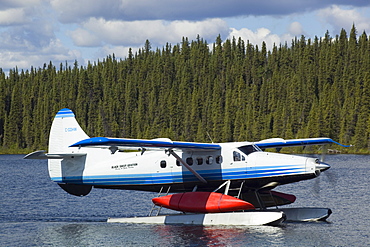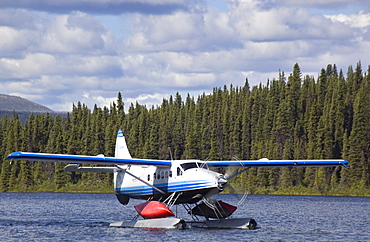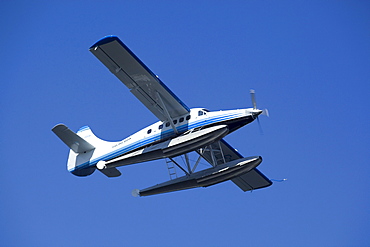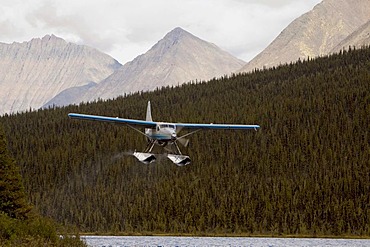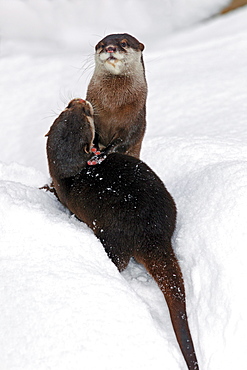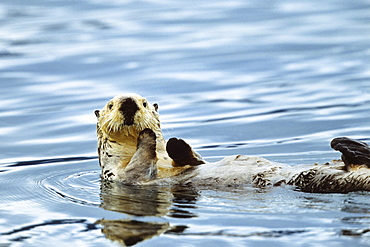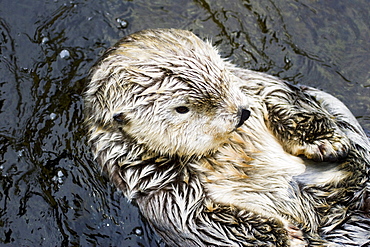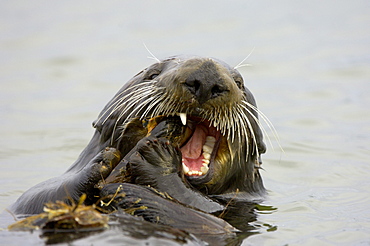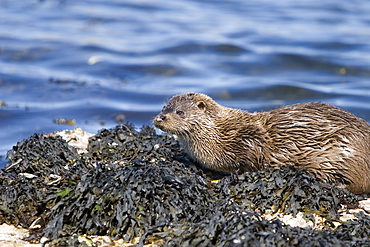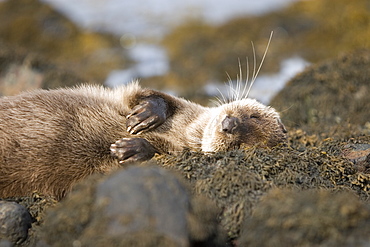Recent searches
Loading...
869-4484 - European otter European otter eating prey portrait close up view
869-4489 - European otter European otter standing on ice portrait front view
869-3383 - European otter otter shakes up at shore of Prestvannet lake Troms county Norway Animals
869-4479 - European otter European otter in water eating prey portrait
869-3593 - European otter otter fishing at lake in spring Germany Animals
869-4465 - European otter European otter head portrait
832-210699 - Taxiing de Havilland Canada DHC-3 Otter, Floatplane, Canoe tied to float, bush plane, Caribou Lakes, upper Liard River, Yukon Territory, Canada
832-210697 - Taxiing de Havilland Canada DHC-3 Otter, Floatplane, Canoe tied to float, bush plane, Caribou Lakes, upper Liard River, Yukon Territory, Canada
832-210700 - Flying de Havilland Canada DHC-3 Otter, Floatplane, bush plane, Caribou Lakes, upper Liard River, Yukon Territory, Canada
990-154 - Unusual scratches and impermanent patches on the skin of a Minke whale (Balaenoptera acutorostrata) known as Otter who was first identified in the St. Lawrence estuary, Canada, in 1996.
832-135510 - Bush plane, float plane de Havilland Canada DHC-3 Otter taking off from McClusky Lake, Wind River, Mackenzie Mountains, Yukon Territory, Canada
817-423148 - European otter Lutra lutra or Eurasian river otter feeding on grains, Ornithological park of Pont-de-Gau, Saintes Maries de la Mer, Camargue, France
832-115591 - Globally unique fishing with otters (Lutra lutra), Bangladesh, Asia
832-116951 - Asian Small-clawed Otter, Oriental Small-clawed Otter, Oriental Short-clawed Otters (Aonyx cinerea) (Amblonyx cinerea) two in winter in snow
832-74990 - Otter (Lutra lutra), Wildpark Edersee, North Hesse, Germany, Europe
1113-72221 - Air Seychelles DHC-6 Twin Otter Airplane, Praslin Airport, Praslin Island, Seychelles
1113-23627 - Sea otter swimming on his back, Enhydra lutris, Alaska, USA
1116-31079 - California, Monterey, California sea otter (Enhydra lutris).
1116-31083 - California, Monterey, California sea otter (Enhydra lutris).
1116-34210 - California, Monterey Bay, Sea Otters (Ehydra Lutris) Swimming on their backs, adult and juvenile
1116-34208 - California, Monterey Bay, Sea Otter (Ehydra Lutris) floating on his back in water
1116-25996 - Tk0049, Thomas Kitchin; Sea Otter. Pacific Coast, North America. Enhydra Lutris.
1116-15154 - Girl (22 years old) Canoeing, Otter Falls, Whiteshell Provincial Park, Manitoba
857-16108 - Rappelling off cliff at Acadia National Park, Maine
857-13551 - Climber rappelling at Acadia National Park
857-8998 - A pilot relieves himself before refueling his Twin Otter at Tanquary Fjord in Canada.
1198-497 - Sea otter (enhydra lutris), monterey, usa, in water, hands upright, close, up.
1190-178 - Sea otter, enhydra lutris. Swimming; lying on its back; summer; .
1190-179 - Sea otter, enhydra lutris. Swimming; lying on its back; summer. Restrictions for postcards in german-speaking areas
1198-48 - European otter (lutra lutra) portrait, british wildlife centre, uk
1198-173 - Sea otter (enhydra lutris), monterey, usa, biting mussel, close, up
1198-596 - Not for sale in france for postcards between september 2010 to august 2013. Sea otter (enhydra lutris), monterey, usa, resting on back in water, close, up.
1198-10 - Sea otter (enhydra lutris), monterey, usa, close, up in water.
1198-390 - Sea otter (enhydra lutris), monterey, usa, biting mussel. close, up in water.
1198-636 - Sea otter (enhydra lutris), monterey, usa, resting on back in water, close, up
764-3324 - River Otter (Lutra canadensis) on frozen Yellowstone Lake, Yellowstone National Park, Wyoming, United States of America, North America
1065-45 - Pair Of Otters, Lontra canadensis; River Otter; Otters near the water; Yellowstone Otters, Yellowstone River; Yellowstone National Park; Winter; Wyoming;
1065-30 - Duck For Lunch, Lontra canadensis; River Otter; Otters near the water; Otters with a duck to eat; Yellowstone Otters, Yellowstone River; Yellowstone National Park; Winter; Wyoming;
1065-2 - A Romp Of Otters, Lutra canadensis, River Otter, Yellowstone National Park; Wyoming;
988-87 - Eurasian river otter (Lutra lutra) eating a male lumpsucker (Cyclopterus lumpus) fish, also known as a sea hen or scarclagger. Hebrides, Scotland
988-34 - Eurasian river otter (Lutra lutra). Hebrides, Scotland
988-61 - Eurasian river otter (Lutra lutra) eating a large crab. Large fish and crabs are difficult to constrain and eat in the water so are often brought ashore. Otters will sometimes swim realtively long distances in order to do so. Hebrides, Scotland
988-28 - Eurasian river otter (Lutra lutra). Hebrides, Scotland
988-40 - Eurasian river otter (Lutra lutra) foraging in and among the seaweed. Otters on Scotland's west coast and islands have adapted well to making a living in the marine environment. Hebrides, Scotland
988-46 - Eurasian river otter (Lutra lutra) resting in the seaweed and rocks. Otters spend a great deal of time resting, usually close to the water's edge or on rocks just offshore. This time is spent sleeping and preening fur etc. Notice the recent injuries sustained by this otter around the head and neck area. Hebrides, Scotland
988-86 - Eurasian river otter (Lutra lutra) eating fish, long-spined bullhead (Taurulus bubalis). Hebrides, Scotland
988-73 - Eurasian river otter (Lutra lutra). Hebrides, Scotland.
988-75 - Eurasian river otter (Lutra lutra). Hebrides, Scotland.
988-29 - Eurasian river otter (Lutra lutra). Hebrides, Scotland
988-67 - Eurasian river otter (Lutra lutra) mother and cub. Cubs often have darker fur than their mothers and for the first few months are much more 'buoyant' in the water. Hebrides, Scotland
988-25 - Eurasian river otter (Lutra lutra). Hebrides, Scotland
988-59 - Eurasian river otter (Lutra lutra) resting on seaweed. Otters spend a great deal of time resting ashore, usually near to the water's edge. This time is spent sleeping and preening fur etc. Visits ashore may also be to find fresh water to drink. Hebrides, Scotland
988-109 - Eurasian river otter (Lutra lutra). Otters in western Scotland have adapted well to life in a marine environment, though proximity to sources of fresh water is essential. Hebrides, Scotland
988-65 - Eurasian river otter (Lutra lutra) eating a male lumpsucker (Cyclopterus lumpus) fish, also known as a sea hen or scarclagger. Hebrides, Scotland
988-69 - Eurasian river otter (Lutra lutra). Hebrides, Scotland
988-80 - Eurasian river otter (Lutra lutra) resting in the seaweed and rocks. Otters spend a great deal of time resting, usually close to the water's edge or on rocks just offshore. This time is spent sleeping and preening fur etc. Notice the recent injuries sustained by this otter around the head and neck area. Hebrides, Scotland
988-92 - Eurasian river otter (Lutra lutra) eating flatfish. Hebrides, Scotland
988-82 - Eurasian river otter (Lutra lutra) resting on seaweed. Otters spend a great deal of time resting ashore, usually near to the water's edge. This time is spent sleeping and preening fur etc. Visits ashore may also be to find fresh water to drink. Hebrides, Scotland
988-99 - Eurasian river otter (Lutra lutra) sprainting on high point. The spraint is a method of marking territory and high points are a favoured location, even those washed by tides.
988-77 - Eurasian river otter (Lutra lutra) foraging in and among the seaweed. Otters on Scotland's west coast and islands have adapted well to making a living in the marine environment. Hebrides, Scotland
988-58 - Eurasian river otter (Lutra lutra) resting on seaweed. Otters spend a great deal of time resting ashore, usually near to the water's edge. This time is spent sleeping and preening fur etc. Visits ashore may also be to find fresh water to drink. Hebrides, Scotland
988-54 - Eurasian river otter (Lutra lutra) resting in the seaweed and rocks. Otters spend a great deal of time resting, usually close to the water's edge or on rocks just offshore. This time is spent sleeping and preening fur etc. Notice the recent injuries sustained by this otter around the head and neck area. Hebrides, Scotland
988-30 - Eurasian river otter (Lutra lutra). Hebrides, Scotland
988-105 - Eurasian river otters (Lutra lutra) resting. Otters take regular breaks during their foraging activities, often choosing high points or islets just offshore in order to sleep, preen and play. Hebrides, Scotland
988-51 - Eurasian river otter (Lutra lutra) resting in the seaweed and rocks. Otters spend a great deal of time resting, usually close to the water's edge or on rocks just offshore. This time is spent sleeping and preening fur etc. Notice the recent injuries sustained by this otter around the head and neck area. Hebrides, Scotland
988-36 - Eurasian river otter (Lutra lutra). Hebrides, Scotland
988-27 - Eurasian river otter (Lutra lutra). Hebrides, Scotland
988-53 - Eurasian river otter (Lutra lutra) resting in the seaweed and rocks. Otters spend a great deal of time resting, usually close to the water's edge or on rocks just offshore. This time is spent sleeping and preening fur etc. Notice the recent injuries sustained by this otter around the head and neck area. Hebrides, Scotland
988-91 - Eurasian river otter (Lutra lutra) having caught Greater spotted dogfish (Scyliorhinus stellaris). The otter took only the innards of the dogfish by opening a short section of skin behind the pectoral fin (see images under 'Greater spotted dogfish'). Hebrides, Scotland (RR)
988-56 - Eurasian river otter (Lutra lutra) resting on seaweed. Otters spend a great deal of time resting ashore, usually near to the water's edge. This time is spent sleeping and preening fur etc. Visits ashore may also be to find fresh water to drink. Hebrides, Scotland
988-64 - Eurasian river otter (Lutra lutra) eating fish, long-spined bullhead (Taurulus bubalis). Hebrides, Scotland
988-88 - Eurasian river otter (Lutra lutra) mother and cub resting in seaweed. Hebrides, Scotland
988-72 - Eurasian river otter (Lutra lutra) in the marine environment to which they have adapted so successfully. Hebrides, Scotland.
988-78 - Eurasian river otter (Lutra lutra) resting in the seaweed and rocks. Otters spend a great deal of time resting, usually close to the water's edge or on rocks just offshore. This time is spent sleeping and preening fur etc. Notice the recent injuries sustained by this otter around the head and neck area. Hebrides, Scotland
988-57 - Eurasian river otter (Lutra lutra) among seaweed and rocks. Hebrides, Scotland
988-93 - Eurasian river otter (Lutra lutra) eating fish. Hebrides, Scotland
988-100 - Eurasian river otter (Lutra lutra) eating fish. Otters in western Scotland have adapted well to life in a marine environment, though proximity to sources of fresh water is essential. Hebrides, Scotland
988-63 - Eurasian river otter (Lutra lutra) having caught Greater spotted dogfish (Scyliorhinus stellaris). The otter took only the innards of the dogfish by opening a short section of skin behind the pectoral fin (see images under 'Greater spotted dogfish'). The rest of the fish, still alive, was left on the shore and never retrieved. Perhaps the tough shark skin and battling fish are too much work when other food is plentiful? Hebrides, Scotland
988-106 - Eurasian river otter (Lutra lutra). Otters in western Scotland have adapted well to life in a marine environment, though proximity to sources of fresh water is essential. Hebrides, Scotland
988-52 - Eurasian river otter (Lutra lutra) resting in the seaweed and rocks. Otters spend a great deal of time resting, usually close to the water's edge or on rocks just offshore. This time is spent sleeping and preening fur etc. Notice the recent injuries sustained by this otter around the head and neck area. Hebrides, Scotland
988-70 - Eurasian river otter (Lutra lutra) catching and eating snake pipefish (Entelerus aequoreus). Hebrides, Scotland.
988-35 - Eurasian river otter (Lutra lutra). Hebrides, Scotland
988-42 - Eurasian river otter (Lutra lutra) foraging in and among the seaweed. Otters on Scotland's west coast and islands have adapted well to making a living in the marine environment. Hebrides, Scotland
988-48 - Eurasian river otter (Lutra lutra) resting in the seaweed and rocks. Otters spend a great deal of time resting, usually close to the water's edge or on rocks just offshore. This time is spent sleeping and preening fur etc. Notice the recent injuries sustained by this otter around the head and neck area. Hebrides, Scotland
988-81 - Eurasian river otter (Lutra lutra) resting in the seaweed and rocks. Otters spend a great deal of time resting, usually close to the water's edge or on rocks just offshore. This time is spent sleeping and preening fur etc. Notice the recent injuries sustained by this otter around the head and neck area. Hebrides, Scotland
988-45 - Eurasian river otter (Lutra lutra) resting in the seaweed and rocks. Otters spend a great deal of time resting, usually close to the water's edge or on rocks just offshore. This time is spent sleeping and preening fur etc. Notice the recent injuries sustained by this otter around the head and neck area. Hebrides, Scotland
988-38 - Pair of Eurasian river otters (Lutra lutra) foraging in and among the seaweed. Otters on Scotland's west coast and islands have adapted well to making a living in the marine environment. Hebrides, Scotland
988-107 - Eurasian river otter (Lutra lutra) eating fish. Otters have adapted well to the marine environment but require sources of fresh water to drink and to clean fur. Hebrides, Scotland
988-24 - Eurasian river otter (Lutra lutra). Hebrides, Scotland
988-68 - Eurasian river otter (Lutra lutra). With her only cub nearby, this mother is displaying great alertness. Hebrides, Scotland
988-66 - Eurasian river otter (Lutra lutra) mother eating fish with cub closeby. The cub tried unsuccessfully to obtain some of its mother's catch. Hebrides, Scotland
988-108 - Eurasian river otter (Lutra lutra) eating fish. Otters have adapted well to the marine environment but require sources of fresh water to drink and to clean fur. Hebrides, Scotland
988-76 - Eurasian river otter (Lutra lutra). Hebrides, Scotland.
988-60 - Eurasian river otter (Lutra lutra) eating a large crab. Large fish and crabs are difficult to constrain and eat in the water so are often brought ashore. Otters will sometimes swim realtively long distances in order to do so. Hebrides, Scotland
988-102 - Eurasian river otter (Lutra lutra) eating flatfish. Hebrides, Scotland
988-39 - Pair of Eurasian river otters (Lutra lutra) foraging in and among the seaweed. Otters on Scotland's west coast and islands have adapted well to making a living in the marine environment. Hebrides, Scotland
988-62 - Eurasian river otter (Lutra lutra) resting on seaweed. Otters spend a great deal of time resting ashore, usually near to the water's edge. This time is spent sleeping and preening fur etc. Visits ashore may also be to find fresh water to drink. Hebrides, Scotland
988-55 - Eurasian river otter (Lutra lutra) resting on seaweed. Otters spend a great deal of time resting ashore, usually near to the water's edge. This time is spent sleeping and preening fur etc. Visits ashore may also be to find fresh water to drink. Hebrides, Scotland
988-26 - Eurasian river otter (Lutra lutra). Hebrides, Scotland






